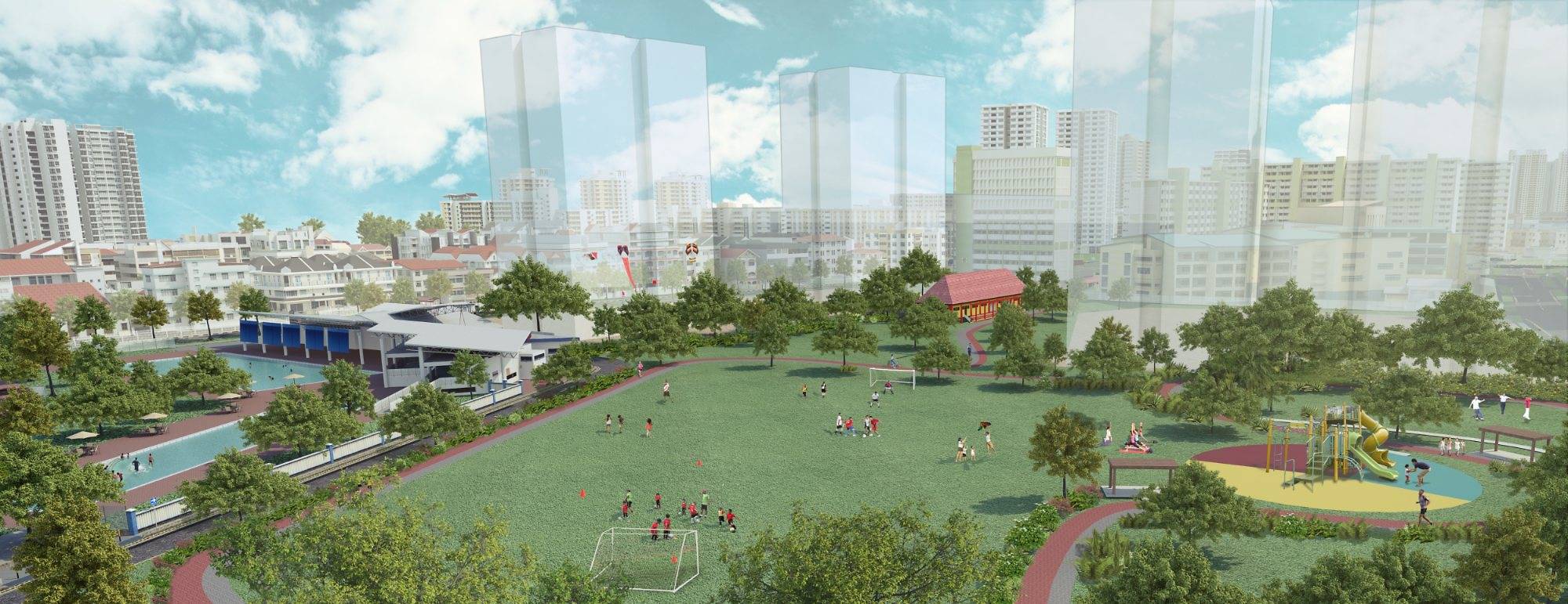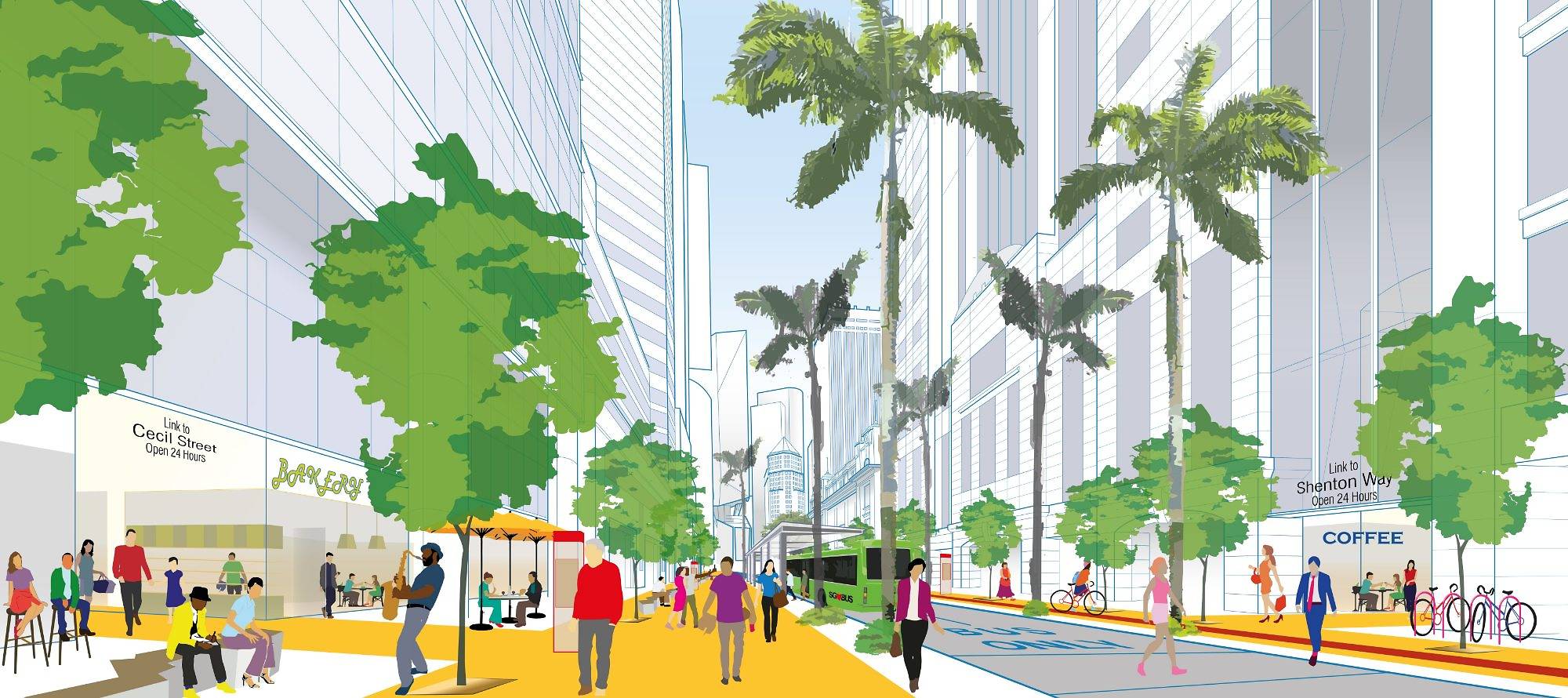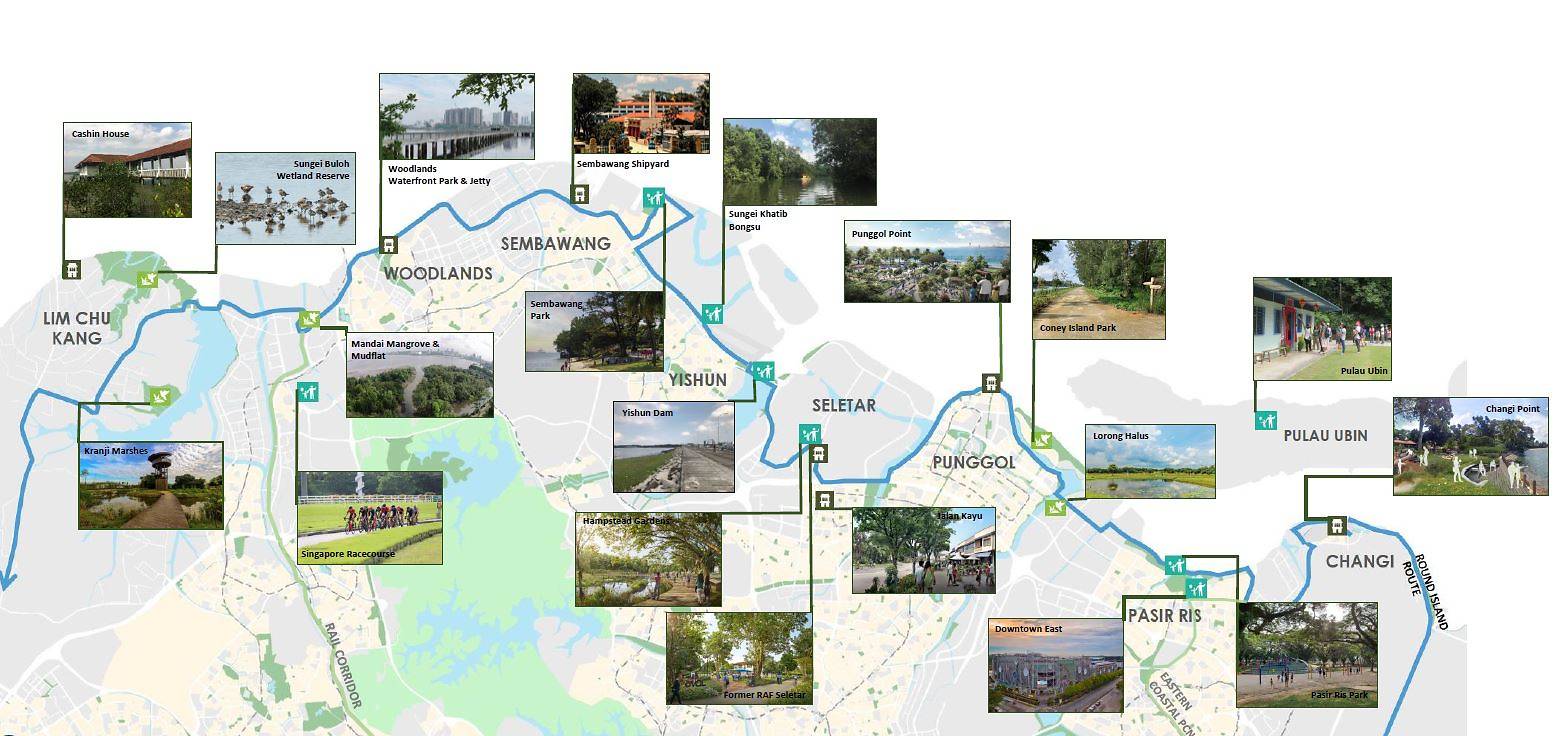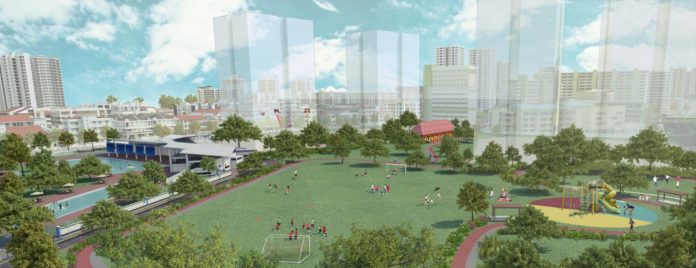SINGAPORE: Places that Singaporeans find familiar such as Orchard Road, mature towns and major recreational corridors will be rejuvenated, said the Urban Redevelopment Authority (URA) on Wednesday (Mar 27).
The areas to be rejuvenated include mature towns such as Farrer Park and Dakota Crescent, and recreational corridors like the Civic District and the Rail Corridor, according to URA’s Draft Master Plan 2019.
It is a blueprint which charts the Government’s development of statutory land over the next 10 to 15 years.
URA said that even as these places undergo rejuvenation, they will retain parts of their unique heritage “sensitively”.
READ: Going underground to free up space on the surface: URA Draft Master Plan
For example, the six former Singapore Improvement Trust blocks built in the 1950s and the iconic Dove Playground in Dakota Crescent will be kept and integrated as a community space.
Around Farrer Park, familiar landmarks such as the Farrer Park Swimming Pool and former Boxing Gym will be also be retained to celebrate the sporting heritage of the area. A sports field and park will be integrated with future housing.

Artist impression of the future Farrer Park. (Graphic: Urban Redevelopment Authority)
In the Downtown area, comprising the Central Business District (CBD) and Marina Bay, there will be a continued push towards a car-lite neighbourhood with the upcoming Thomson-East Coast Line MRT stations – Maxwell and Shenton Way – and Circle Line MRT stations – Prince Edward Road and Cantonment.
By 2021, all buildings in Downtown will be within a 10-minute walk to an MRT station.
For those who prefer to cycle, the existing 22km cycling network will be expanded by more than 5km in the Central area.
URA said that the agencies are also studying the possibility of transforming Robinson Road into a corridor that prioritises public transport and “active mobility” modes of commuting. Along such a corridor, more space can be allocated for buses, cycling paths and pedestrian walkways.

Artist impression of a transit-priority corridor. (Graphic: Urban Redevelopment Authority)
In addition, URA said that it is planning to introduce more homes in the CBD and Marina Bay to increase the vibrancy of the office-dominated Downtown.
READ: More housing planned for the CBD, Marina Bay area: URA Draft master plan
More mixed-used urban neighbourhoods that combine amenities, residential and commercial buildings will be brought in to liven up the neighbourhood, similar to what has been done in Tanjong Pagar.
READ: Business Improvement Districts a way forward for precinct-wide facelifts
Another way of injecting life to familiar places could be through letting vacant state properties or land for short-term uses, such as around Marina Bay, said URA. This will create opportunities to try out new lifestyle offerings.
“The adaptive reuse of existing buildings is about creating opportunities for new users to go in to some of these old buildings there are not yet ready for rejuvenation or redevelopment. So some of these adaptive reuse could add new interests to different precincts and bring in new life to the places,” said Ms Hwang Yu-Ning, URA’s chief planner.
Singapore’s main shopping belt Orchard Road will undergo a facelift as well.
“Differentiated experiences” are planned for each sub-precinct, namely Tanglin, Orchard, Somerset and Dhoby Ghaut. They will be linked by a green corridor between two parks, Singapore Botanic Gardens in Tanglin and Fort Canning Park in Dhoby Ghaut, that flank the shopping street.
READ: More greenery, street activities to make Orchard Road a ‘lifestyle destination’: URA, STB and NParks
MORE PLAY SPACES IN NATURE
The 24km Rail Corridor which runs from Woodlands in the north to Tanjong Pagar in the south will be fully linked up by 2021.
READ: Parts of Rail Corridor to open by 2021 with enhanced offerings and amenities
Some areas around the railway will be conserved for its heritage value such as the Bukit Timah Railway Station and Station Master’s Quarters. Both buildings will be refurbished and re-purposed with suitable amenities.
Nearby, the former Bukit Timah Fire Station and Beauty World will be transformed into gateways for the surrounding nature and heritage attractions such as the Coast-to-Coast trail, Rifle Range Nature Park and the Rail Corridor.
The former fire station building will be conserved and turned into a visitor centre and a central point for the network of attractions in the area.
Likewise, street-level activities and landscaping will be added to improve the walking experience and access from Beauty World to the Rail Corridor.
To the north, a 50km belt of parks, beaches and nature attractions will line the northern coast.

The 50-kilometre Greater Rustic Coast stretches from Lim Chu Kang to Changi along the north. (Graphic: Urban Redevelopment Authority)
Called the Rustic Coast, it will run from Changi to Lim Chu Kang. Visitors will get to see places of military and industrial heritage such as the area formerly occupied by the RAF Seletar, and nature reserves teeming with biodiversity like the Kranji Marshes and Mandai Mangrove and Mudflats.
URA is also exploring recreational options in Kranji, specifically at the Singapore Racecourse, and assessing if it can be turned into a family-friendly and communal spot.
INDUSTRIAL HERITAGE SPOTS
The former Pasir Panjang Power District will be rejuvenated as a new lifestyle and heritage spot highlighting its industrial heritage.
URA said that it is exploring different ways to realise this, including the adaptive reuse of the former power station buildings and opening up the grounds for public access.
It added that it will be sensitive to the adjacent Labrador Nature Reserve as it explore new uses of the spot.
As part of the Greater Southern Waterfront, URA and the Singapore Land Authority will be launching a competition in April for members of public to contribute ideas on how the precinct can be transformed.
“The idea competition is targeted at not just the so-called design professionals or the real estate professionals but it’s really for the community to get on board and give us ideas on how they see the different areas and what potential they see in the different buildings and locations,” said Ms Hwang.
Similarly, the URA will be holding an ideas competition later this year to seek the public’s views for the transformation of Paya Lebar Air Base.
URA said that some of the preliminary ideas include repurposing the former airport buildings and part of the runway into community spaces to retain the area’s rich aviation heritage, building a network of parks and open spaces, as well as building a mixed-used neighbourhood for future residents.
The public can look through the Draft Master Plan 2019 at an exhibition at the URA Centre Atrium from Mar 27 to May 24. Members of the public can also provide feedback and proposals to the URA and Ministry of National Development.





